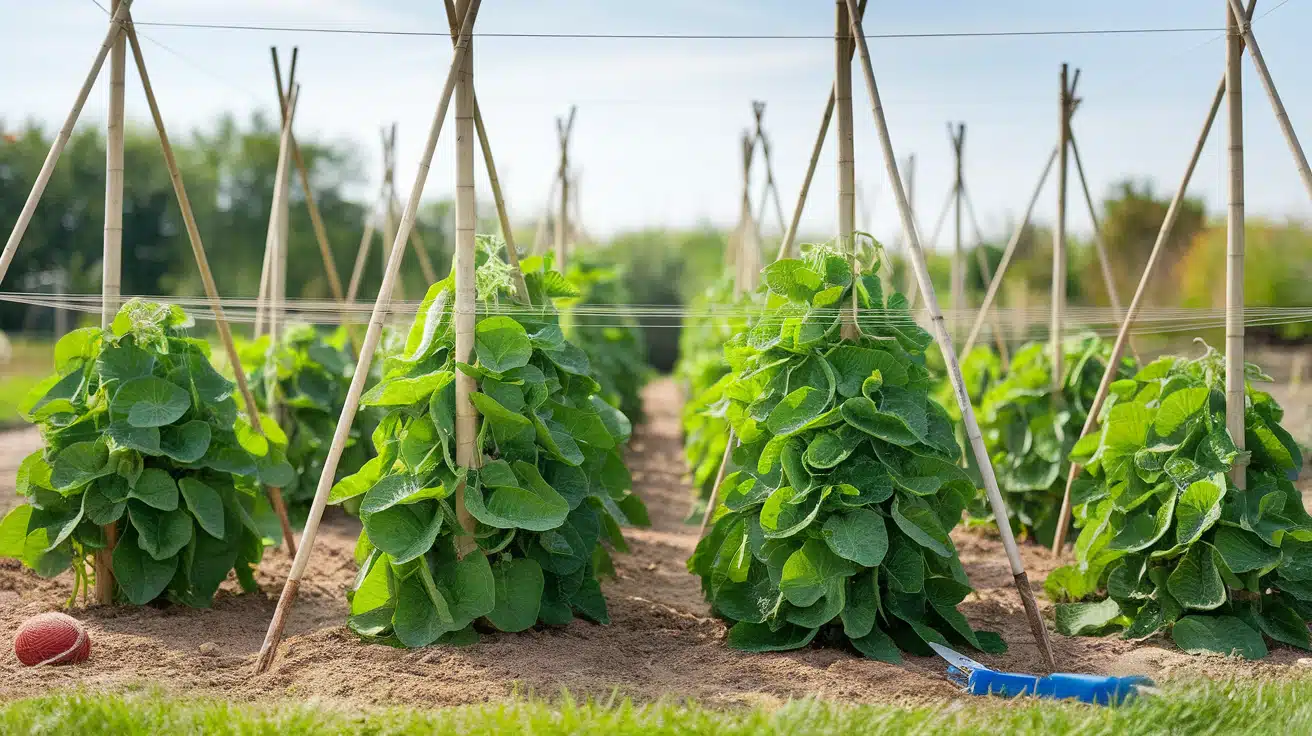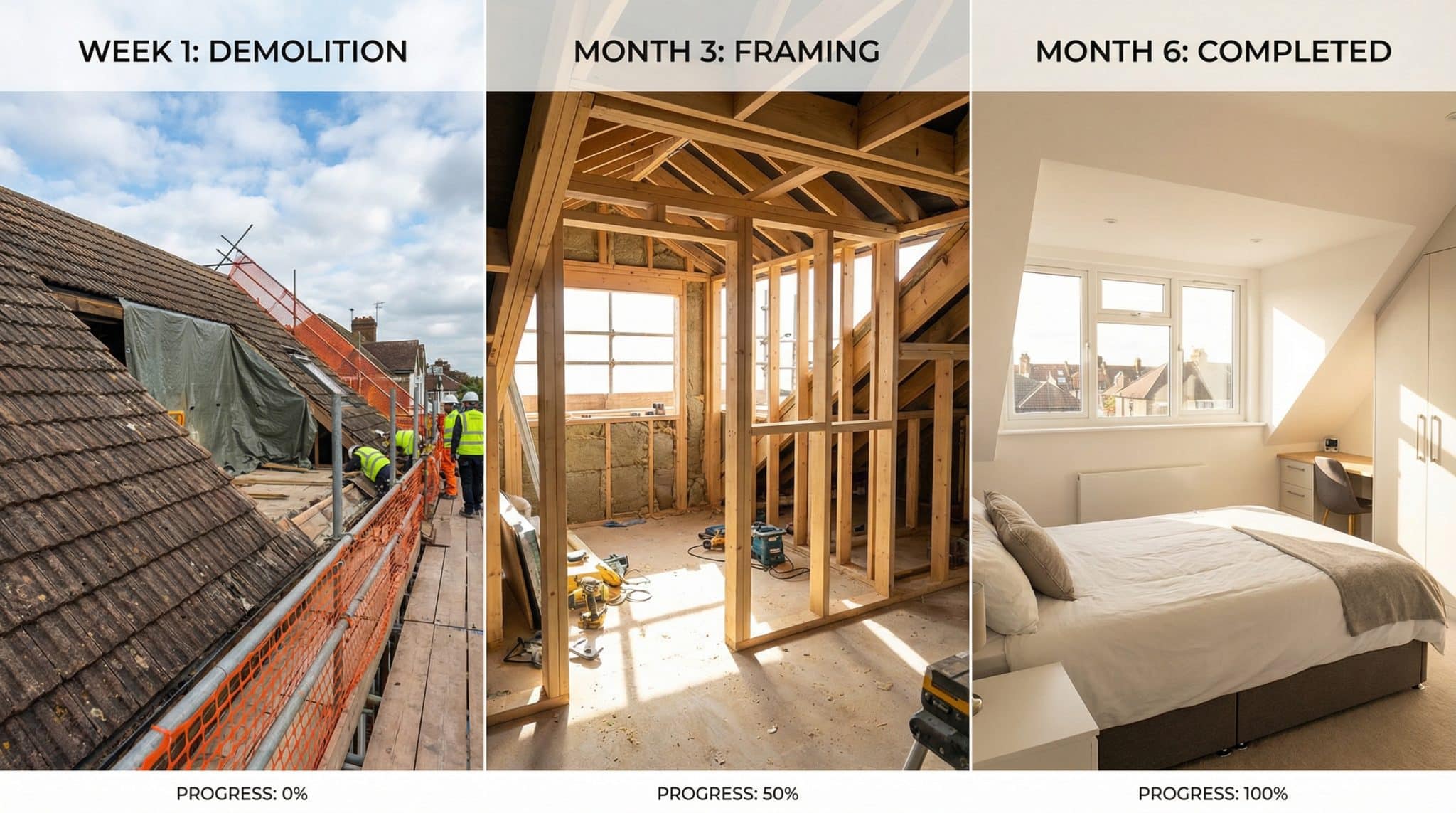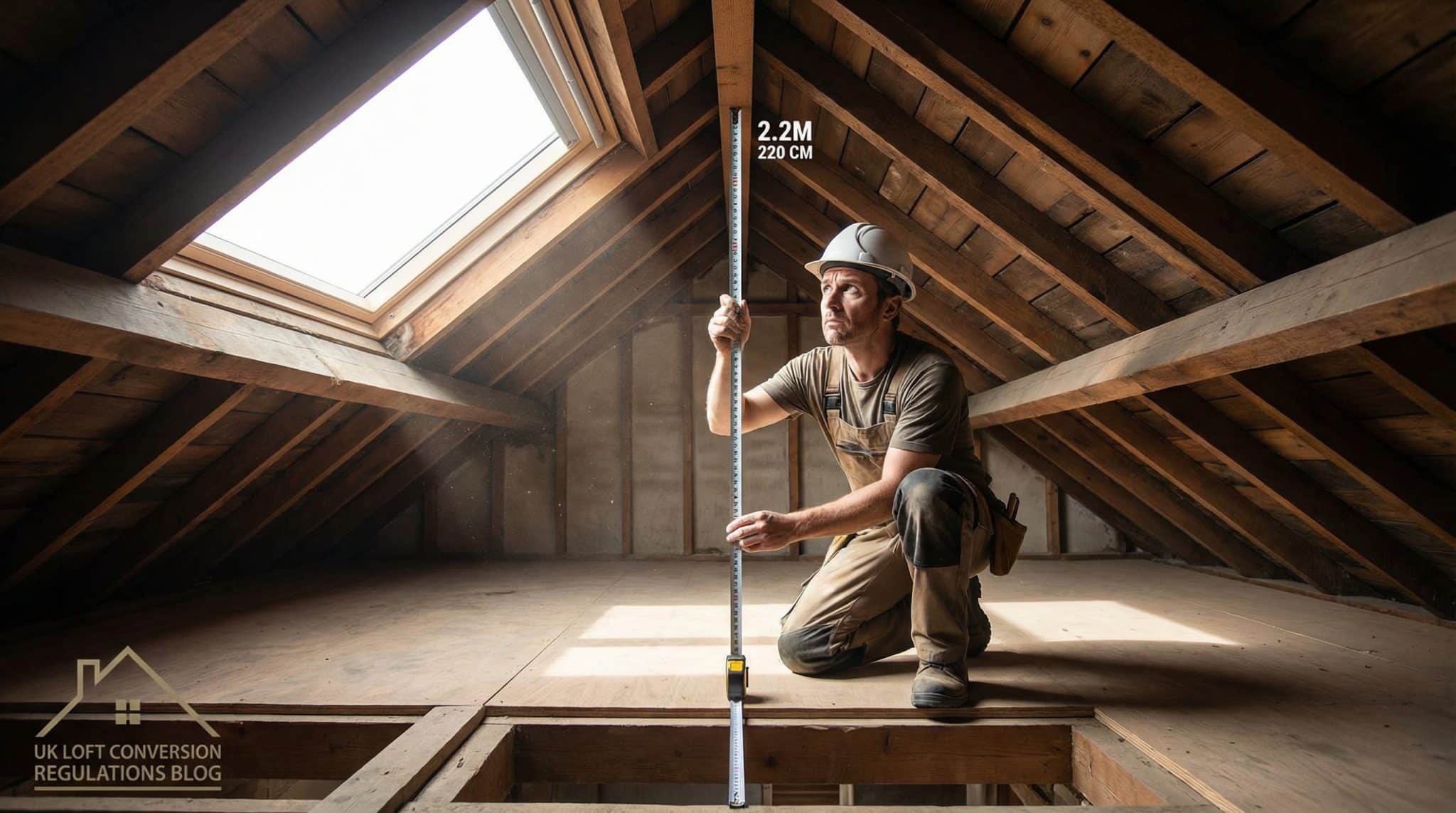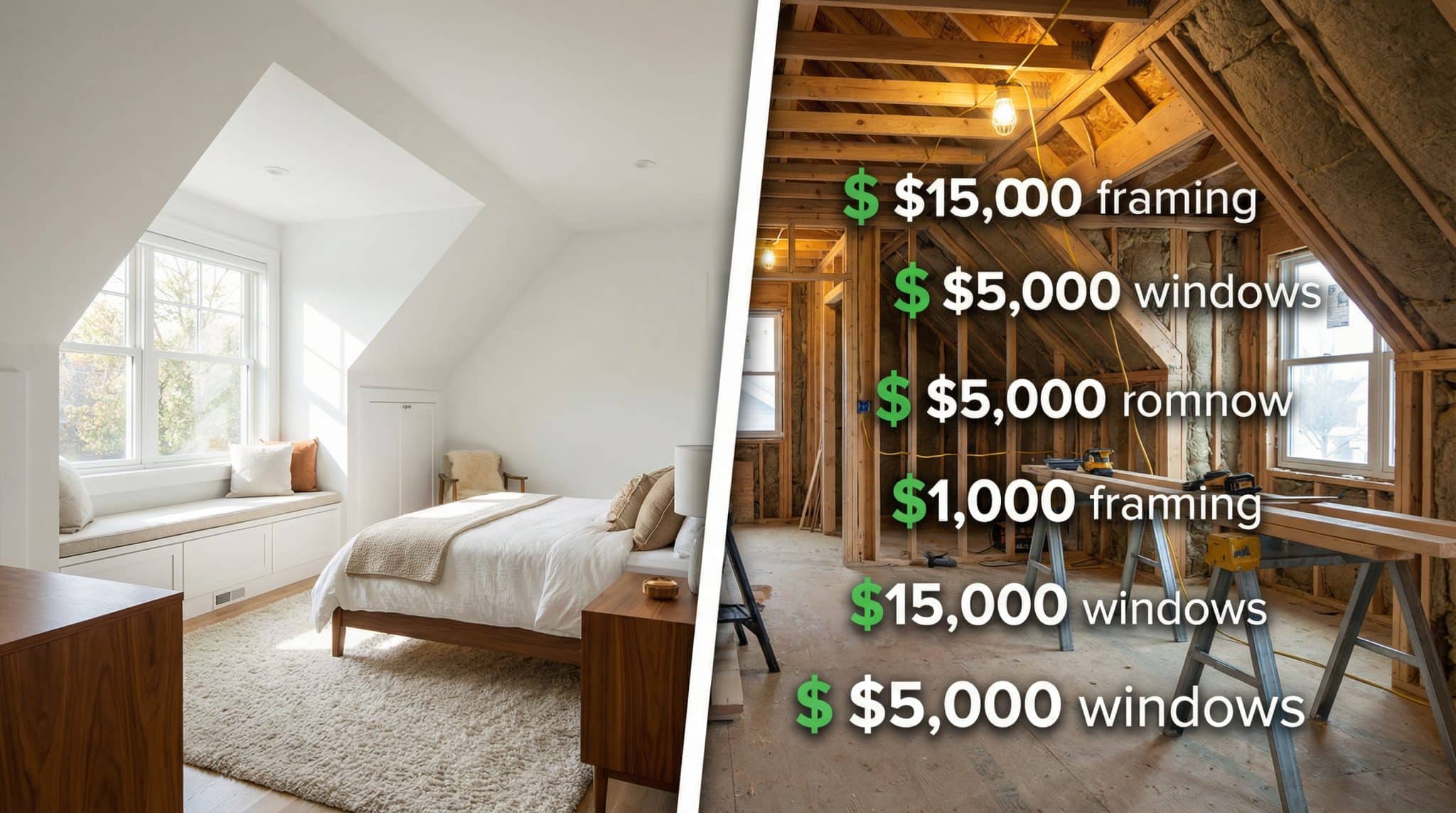Growing broad beans can be frustrating when your plants keep falling over or produce disappointing harvests. Most gardeners struggle with establishing proper support systems and lack knowledge of the right care techniques to achieve healthy, productive plants.
I’ll show you exactly how to support your broad beans properly and share the essential growing tips that make all the difference between weak, struggling plants and strong, productive ones.
In this guide, I’ll walk you through setting up a simple cane-and-string support system, selecting the optimal planting conditions, preparing your soil, managing common pests and diseases, and timing your harvest precisely.
You’ll also learn when and where to plant for the best results.
What Are Broad Beans and Why Grow Them?
Broad beans are large, flat legumes that grow in thick green pods and offer excellent nutrition for your diet. Also known as fava beans, horse beans, or field beans, these legumes have been a staple food source for thousands of years across various cultures. They belong to the legume family alongside peas, lentils, and chickpeas.
Fresh broad beans have a pale green color when young and develop a cream color as they mature. Each thick pod typically holds 3-8 kidney-shaped beans about the size of your thumbnail.
The taste is mildly sweet and nutty when fresh, becoming more earthy and rich when cooked. These beans grow best in cool weather and are usually harvested in late spring or early summer.
Key Characteristics of Broad Beans
- Size and shape: Large, flat, kidney-shaped beans in thick pods
- Color: Pale green when fresh, cream-colored when dried
- Taste: Sweet and nutty when young, earthy when mature
- Texture: Creamy and soft when properly cooked
- Growing season: Cool weather crop, harvested in late spring
- Pod contents: Each pod contains 3-8 individual beans
- Alternative names: Fava beans, horse beans, field beans
Step-by-Step Instructions For Supporting Broad Bean Plants
Please set up a sturdy cane-and-string support system for broad beans by positioning six canes in parallel rows and tightly wrapping string around them at intervals, adjusting the height as plants grow to keep them upright.
Tools and Materials Used For Supporting Broad Beans
- Scissors (for cutting the string)
- 6 canes (garden/bamboo canes)
- 1 ball of string
Step 1: Position the Canes

Place 6 canes in two parallel rows. On the first side, put one cane at the front corner, one in the middle, and one towards the back.
Repeat the same pattern on the opposite side, one at the front, middle, and back. For the best support structure, try to keep the canes in as neat and straight a line as possible.
Add These Unique Elements
- Exact spacing: Recommend 18-24 inches between canes for optimal support
- Cane height: Suggest 5-6 feet tall canes for full-grown broad beans
Step 2: Secure the String
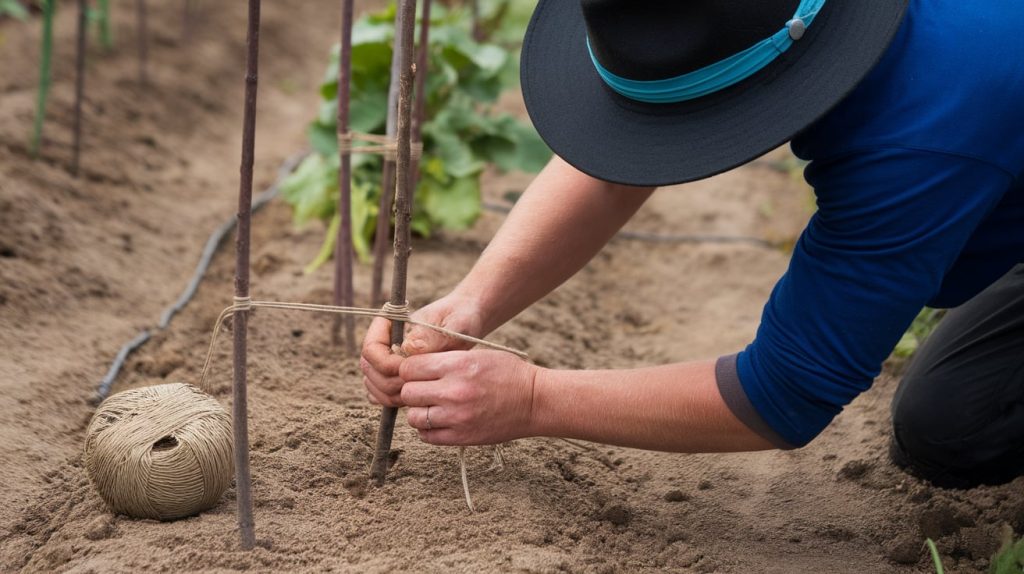
Tie your string tightly to one of the canes at the starting point. Make sure the knot is secure, as the string tends to slip down during wet weather conditions.
This initial tie-off point will anchor your entire support system, so ensure it’s firmly attached before proceeding to the next step.
Add These Unique Elements
- Knot recommendation: Use a clove hitch knot for maximum grip
- Height marking: Start the first line 12 inches from ground level
Step 3: Wrap the String
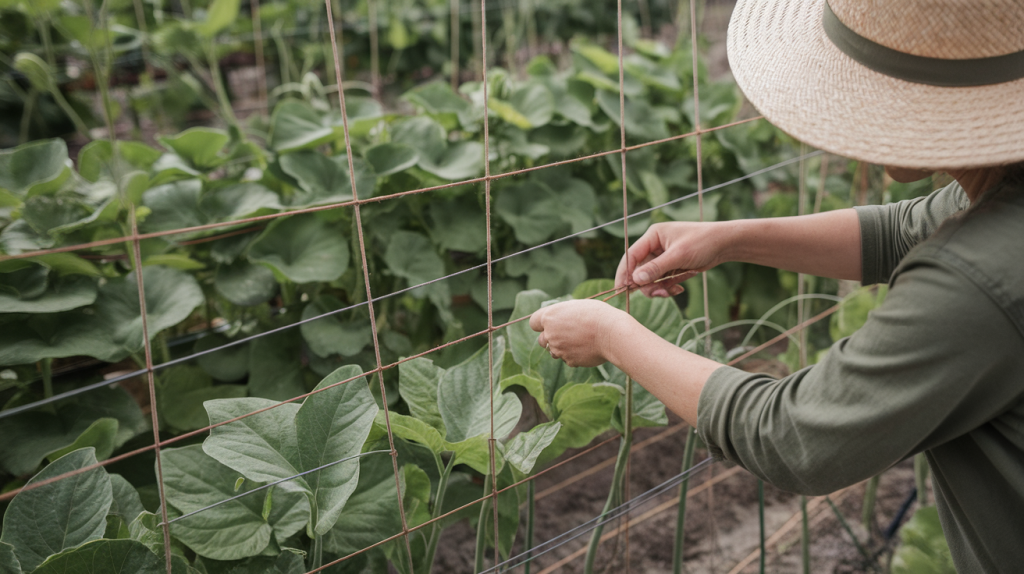
Starting from your tied cane, wrap the string around each cane in sequence, keeping the line as taut as possible. Move systematically from one cane to the next, maintaining tension throughout.
This creates a horizontal support line that will hold the broad bean plants upright as they grow taller.
Add These Unique Elements
- Tension test: The String should “ping” when plucked like a guitar string
- Helper tip: Have someone hold the string while you work
Step 4: Tie Off the End
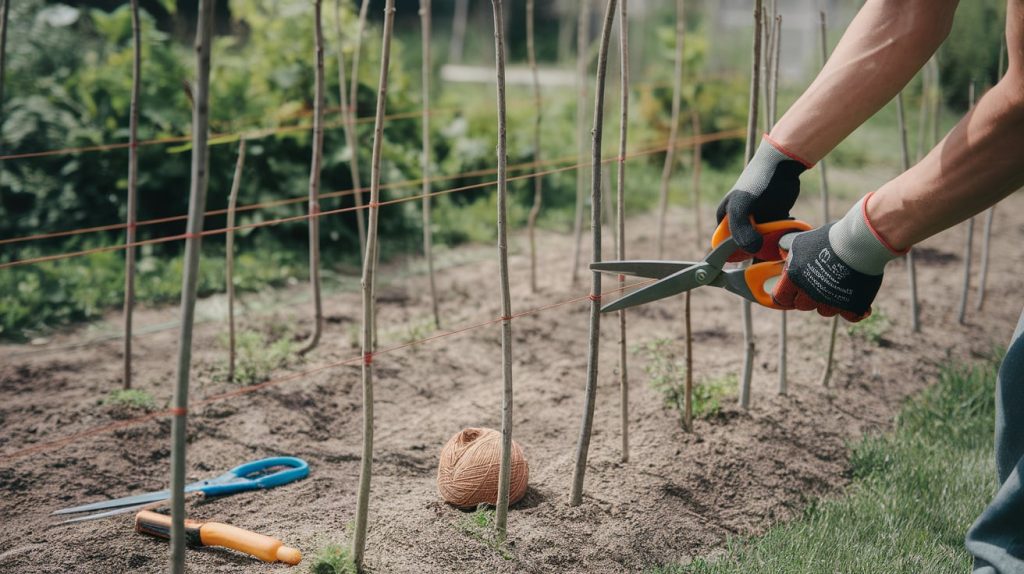
Once you’ve wrapped the string around all six canes, cut the string with scissors and tie the end securely to the final cane. This completes your first horizontal support line.
The string should be tight and stable, providing a solid framework for your broad bean plants to lean against.
Add These Unique Elements
- Double-knot security: Always tie twice for windy locations
- Quality check: Walk around and test each section by gently pushing
Step 5: Add More Lines as Plants Grow
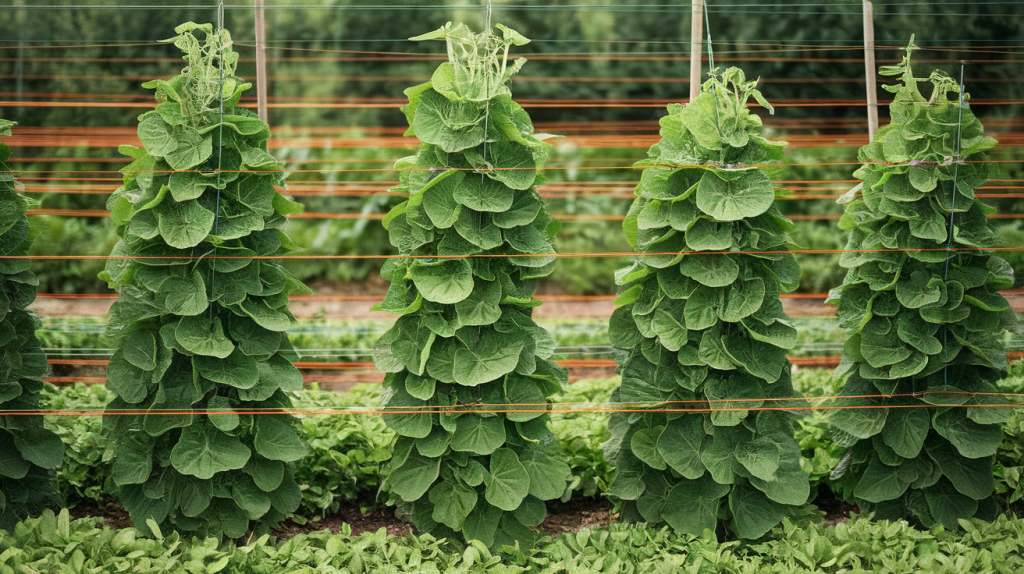
As your broad bean plants continue growing taller, add additional horizontal lines of string at higher levels. Repeat the same wrapping process at different heights on the canes.
This creates multiple support levels, ensuring your plants remain upright and well-supported throughout their growing season.
Add These Unique Elements
- Growth indicators: Add a new line when plants reach 75% of the current support
- Spacing guide: Keep 8-10 inches between horizontal string lines
When and Where to Plant Broad Beans?
Plant broad beans in early spring in cool, well-drained soil with full sun, ensuring soil temperatures are above 45°F for optimal root growth and productivity
1. Best Time to Plant Broad Beans
Plant broad beans in early spring for the best results. The ideal time is 2-4 weeks before your last frost date. Cool weather helps seeds grow strong roots before hot summer arrives.
Soil temperature matters more than air temperature. Wait until the soil reaches 45-50°F before sowing seeds. Cold soil causes seeds to rot rather than germinate and grow. Use a soil thermometer to check the temperature at a 2-inch depth.
2. Choose the Right Climate
Broad beans love cool, mild weather. They grow best when temperatures remain between 50°F and 70°F for most of the growing season. Hot weather above 80°F makes plants stop producing pods.
Avoid planting broad beans in very hot climates unless you grow them as a winter crop. Desert areas and hot southern regions should plant broad beans in the fall for a winter harvest.
3. Soil Conditions for Success
Well-drained soil is crucial for the healthy growth of broad bean plants. These plants hate wet, soggy conditions that cause root rot. Heavy clay soils require the addition of sand or compost.
Rich, fertile soil produces bigger harvests. Add 2-3 inches of compost or aged manure before planting. Work organic matter into the top 8 inches of soil with a garden fork.
4. Location and Sunlight Needs
Choose a spot with full morning sun for your broad bean patch. These plants need at least 6 hours of direct sunlight daily, and morning sun helps dry dew from leaves quickly.
Some afternoon shade helps in hot climates. If your area gets very hot in late spring, pick a location with shade during the hottest part of the day. This keeps plants cooler and more productive.
5 Essential Tips for Harvesting Broad Beans at the Right Time
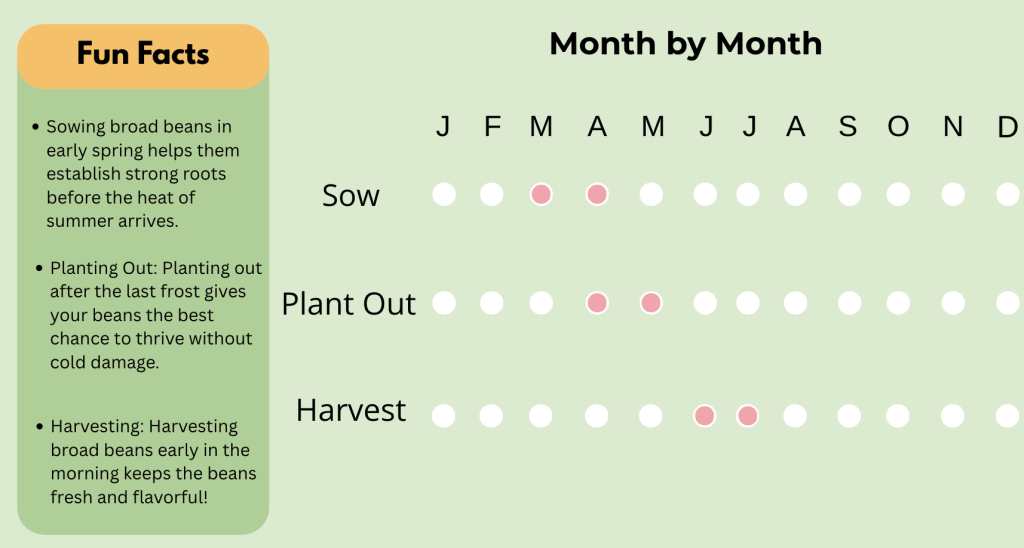
1. Feel your pods regularly to judge ripeness. Mature broad bean pods should be 4-6 inches long and feel firm when gently squeezed.
The pods will be plump and well-filled but not hard. Soft, squishy pods are overripe, while very small pods need more growing time.
2. Watch for pods turning from bright green to slightly pale green. Fresh pods ready for harvest have a smooth, glossy surface.
Avoid pods that look dull, yellowed, or have brown spots. The best eating quality comes from pods that still look fresh and vibrant.
3. Open a sample pod to check the beans inside. Perfect broad beans should be bright green and about thumbnail size.
They feel tender when pressed with your fingernail. White or very pale beans are too young, and brown or black beans are too old and will taste bitter.
4. Pick your broad beans early in the morning when temperatures are cool. Morning harvesting yields the best flavor and keeps pods fresh for longer.
Avoid picking in the hot afternoon sun when plants are stressed, as pods may be tough.
5. Bend the pod slightly; it should snap cleanly if it is ready for harvest. Mature pods make a crisp snapping sound when broken.
Pods that bend without breaking need more time to develop. This simple test works better than just looking at pod size.
Conclusion
Now you have all the knowledge needed to make broad beans a regular part of your healthy eating plan. These protein-packed legumes bring both nutrition and flavor to your table, whether you choose fresh, frozen, or dried varieties.
The key to success with broad beans lies in proper preparation and storage. Remember to blanch fresh beans, remove their tough outer skins when necessary, and store them properly to maintain their quality. With 13 grams of protein and 9 grams of fiber per cup, they’re worth the extra preparation time.
From Mediterranean salads to hearty Middle Eastern stews, broad beans are versatile and fit into countless recipes. Their mild, nutty flavor pairs well with herbs, citrus, and aged cheeses.
What’s your next step?
Visit your local market this week and pick up some broad beans. Start with a simple steamed preparation and gradually try more complex international dishes as you build confidence with this nutritious food.
Frequently Asked Questions
What Is the Difference Between Broad Beans and Fava Beans?
Broad beans and fava beans are the same plant. “Broad beans” is the British term, while “fava beans” is used in America and Mediterranean countries.
Are Broad Beans Good or Bad for You?
Broad beans are a good source of nutrition. They’re packed with protein, fiber, folate, and iron. However, people with G6PD deficiency should avoid them.
Who Can’t Eat Broad Beans?
Broad beans can cause favism, a severe condition, and should be avoided by individuals with G6PD deficiency and those with allergies to legumes.
